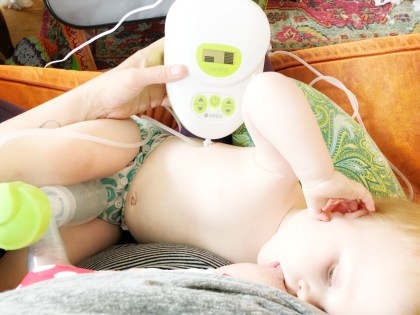Expecting? Have a new baby?
Thousands told us what they wanted in a pregnancy, newborn, postpartum, baby-feeding, baby-sleep, and baby-gear guide and everything they wished they had known before having their baby.
Listening to what our fans told us what every parent needed when expecting or had a new baby, we created first edition of The Leaky Boob New Baby Guide and it is the guide of our dreams. But don’t take our word for it, here’s what Kathleen McCue, PhD, CNM, IBCLC had to say about TLB’s guide:
“Single best guide currently available to new families. Honest, concise, informative and all around fun to read! Refreshing to have such a valuable resource by those truly in-the-know.”
At just $1.99, you can get your copy and support The Leaky Boob and see for yourself.
Not convinced? Keep scrolling for a preview of The Leaky Boob 2021 New Baby Guide.

____________________________________________________________________________
The Leaky Boob 2021 New Baby Guide is a resource for first-time-parents and new-parents-again with checklists, vital conversations to have for partners and with your health care provider, family, work place, and more. The guide provides information as a jumping off point of what collectively hundreds of parents shared they wish they had known before having a baby. With sections on pregnancy, newborn, postpartum, feeding, sleep, and gear, our guide covers the essentials of having a new baby.
Plus exclusive discount codes!
Ready to get your 2021 New Baby Guide?
____________________________________________________________________________


____________________________________________________________________________
____________________________________________________________________________
Tools such as our checklists, vital conversations, and product recommendations support you in making sure you have the important conversations and items you need for your new baby with expert information.
Get The Leaky Boob New Baby Guide here.
____________________________________________________________________________


____________________________________________________________________________
The Leaky Boob New Baby Guide gets real about aspects of having a new baby nobody ever talks about, like postpartum bleeding, normal newborn behavior, normal sleep, body changes in pregnancy and postpartum, difficulties with breastfeeding, postpartum mood disorders, and so much more.
Think TLB’s New Baby Guide is for you? Don’t miss it! Download your digital copy now.
____________________________________________________________________________


____________________________________________________________________________
Practical must-know information, realistic expectations, and tips from the most experienced parents just like you, The Leaky Boob 2021 New Baby Guide shares what thousands of parents told us they wish they had known before having baby without overwhelming you with boring irrelevant information.
See why our guide has received rave reviews and get yours here today!
____________________________________________________________________________


____________________________________________________________________________
The Leaky Boob 2021 New Baby Guide supports new parents in preparing for their new baby not only with information but with vital conversations and checklists of what is really important to prepare when having a new baby.
What do thousands wish they had known when having a new baby? Find out here.
____________________________________________________________________________


____________________________________________________________________________
The Leaky Boob New Baby Guide can’t tell you the best products for you and your baby but we can tell you some of our favorites and why without overwhelming you with options.
Don’t miss out on our favorite products!
____________________________________________________________________________




Don’t wait, get your 2021 New Baby Guide here today!
____________________________
Want to help us continue producing content and resources to support families? Join our Patreon for even more access.
____________________________























